I am happy to say that I have fulfilled a dream that I have had for years: growing my own garden. I have always had an appreciation for gardening and the life lessons you can learn from the plant cultivation process. One of the main reasons I have wanted to do this is to share the experience with my children. Gardening can be such a metaphor for life, and it will be a great visual for them to learn some potent lessons about how things grow and flourish…and how they can also wither, and die.
Planting a garden with your kids can be daunting, especially when you are a newbie, like me. I didn’t really know where to start but I did know one thing…I needed some help. I have learned the lesson that you should always surround yourself with people who know more than you, thereby ensuring that you will always be learning something. I called upon the company who handles our landscaping needs and the owner was more than happy to help.
Step 1: Design your garden.
We have a couple of nice spaces around our home that are conducive to growing a garden, but we chose an area in front of the house near a few trees. We also opted for a raised garden bed for several reasons. It’s supposed to be a more controlled environment where vegetation can have more regulated temperatures, better water drainage, less soil compaction from foot traffic and more protection from pests. One of the things I also liked about having a raised bed garden versus an in-ground garden is that you can select the type of soil you want use for your garden.
We decided on a mix of plants so that it would be more interesting to the kiddos. Planting a garden with your kids should be motivating and exhilarating for all involved. They will be much more engaged in the process if they can anticipate the fun of the harvest. Our selections were basil, mint, various peppers, watermelon, cantaloupe and cucumbers.
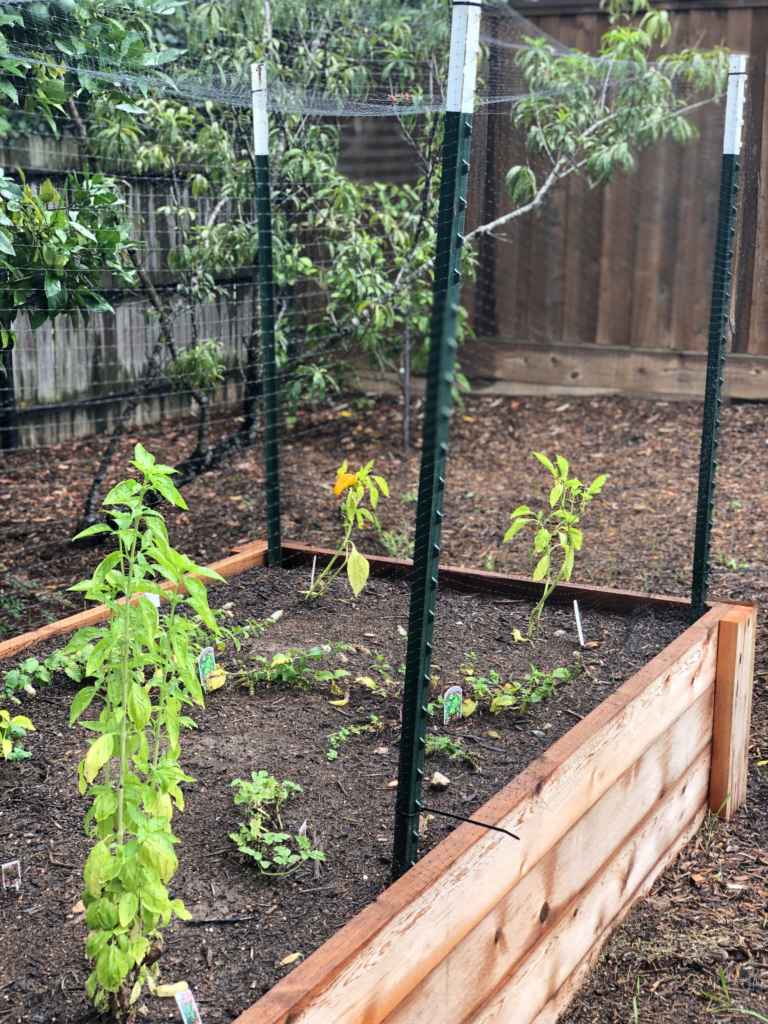
Step 2: Obtain your supplies.
We found a great nursery that would allow us to shop in person since some are on lockdown due to the current pandemic. When you are planting a garden with your kids, it’s important to allow them to be a part of the entire process. For us, this included selecting and purchasing our soil, the plants and flower pots. We selected a special formulation of soil that is nutrient-rich, organically sourced and known to promote optimal growth for healthy plants. We selected flower pots for particular plants such as mint, which are known to grow wildly if not sufficiently contained in some way.
We also purchased zip ties and garden netting to keep pests away. Garden bird netting is a lightweight plastic mesh you can use to cover the garden and deter birds and small animals from eating all of the plants.
We needed fertilizer to optimize our plant growth, so we chose Raised Bed Plant Food by MiracleGro. It has been specially formulated for raised bed gardening whether you’re growing flowers, fruits, herbs or vegetables. It has a mix of calcium and other nutrients that will nourish the plants above and below the surface of the soil for months.
Lastly, we purchased live earthworms to burrow into our garden and aerate the soil.
Other supplies you may need for ongoing garden maintenance include a small gardening tool (such as a hand rake or shovel), gardening gloves and a water hose to get water to your plants.
Step 3: Build your garden.
First, you need a place for your garden to grow. We opted for a garden box in order to have more control of what happens in our garden. We asked our landscaper friend to build us a 4 x 8 raised bed out of untreated wood. We also added some steel poles (pictured below) so that we could add netting to discourage pests from swooping in and stealing our harvest. We draped the netting across the bed on top of the poles and used zip ties to secure it to the poles. We chose the netting because it is not obtrusive when you see it and we can mostly care for the plants without having to remove it.
You can find more about building a 4 x 4 raised garden box here. https://www.finegardening.com/article/building-a-raised-bed-part-i https://www.finegardening.com/article/building-a-raised-bed-part-ii https://www.finegardening.com/article/raised-bed-installation-building-tips
You can also purchase garden boxes that are easily assembled on sites such as Wayfair, Amazon and The Home Depot.
Decide on placement of the plants based on which ones need the most sunlight, which ones potentially grow wildly and may need more space and which ones need to grow longer and spill over the side of the garden box.
Dig holes at least 6-8 inches deep in order to insert your plants deep enough to take root. Take the plants out of the plastic container it was sold in and pull apart the roots just a bit. This will ensure there is enough space around the roots inside the soil for the plants to thrive. This is the fun part when you are planting a garden with your kids…getting your hands dirty!! Be sure to let them be a part of the entire process. When my kids massaged the roots of their plants and placed them into the soil, I could see the excitement and joy it brought them. Now that they had planted a garden themselves, they were super motivated to help it thrive.
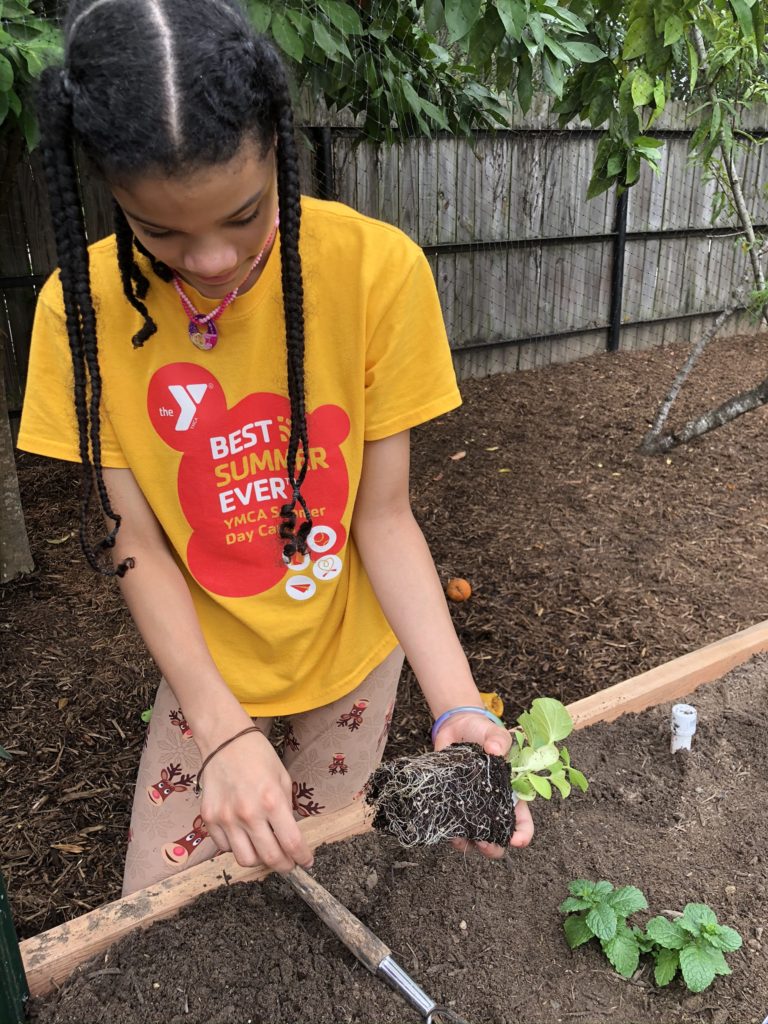
Once you have placed all of your plants where you want them to be, it’s time to set the garden up for success. The first thing to do is apply the plant food, or fertilizer, to the soil. You sprinkle it on the soil surface, and then mix it into the top 1-2 inches of soil to get the nutrition to the roots where the plants need it. Then, you water the garden thoroughly to start “feeding” it.
One thing we learned is that soil can become compacted and lose more space to hold oxygen. Oxygen plays a vital role in a plant’s ability to absorb water and function properly. There are a few ways to make these small cylindrical holes in the soil so that it can oxygenate well, but we chose the one that seemed the most organic: earthworms. Ew!
We made a hole in the soil in the center of the garden and placed about 100 earthworms into it. Then, we covered them with a moist sheet of newspaper to encourage them to burrow down into the soil. These worms aerate the soil and add organic matter to increase the nutrients in the soil. You can read more about the benefits of soil aeration to a garden in this article. https://www.gardeningknowhow.com/garden-how-to/soil-fertilizers/why-does-soil-need-aerating.htm
Step 4: Maintain your garden.
You’re planting a garden with your kids, so why not let them maintain and manage it for you? The above-referenced article regarding soil aeration also touches on some basic questions to keep in mind as you maintain your garden.
- Is it getting too much or too little water?
- Is it getting too much or too little sunlight?
- Is it getting enough fertilizer?
Most gardens will need to be watered at least every other day (unless it rains) to keep them growing properly. We showed the kids how to check the plants each day and water them when needed. Plant food (fertilizer) should be reapplied every three months. We made sure that the garden was located in a place for the optimal amount of sunlight. We adjust our maintenance schedule based on weather changes and observation of plant growth progress.
Step 5: Assess your progress.
Sometimes, you will see your garden thriving and yielding beautiful vegetation to be enjoyed by all! Other times, planting a garden with your kids becomes a sad moment where you have to discuss why some plants, regardless of how you care for them, just don’t flourish. We lost our cucumber plant very early and it was just pitiful to watch the kids deal with that. On the other hand, they were so excited to pinch off the very first thing that our little garden produced: a beautiful yellow pepper. My kids don’t even eat peppers but they can’t wait for us to cook it up so we can all have a taste.
When planting a garden with your kids, I encourage you to have them look up the plant species on the internet and research what the plants need to grow well. Then, have them implement these care strategies and monitor the progress of the different plants. Some will grow well, while others will shrivel up and die. Share the lessons as a family, but then re-plant as necessary.
Planting a garden with your kids is a beautiful way to learn as a family and teach your children the importance of responsibility. They can learn the same types of lessons as they would by caring for a pet, only with less mess and need for your intervention. Gardening is an activity that your family can share together with minimal risk. And it comes with a great fringe benefit…in the event of apocalypse, we are developing the skills to grow our own food!! Family gardening for the win!
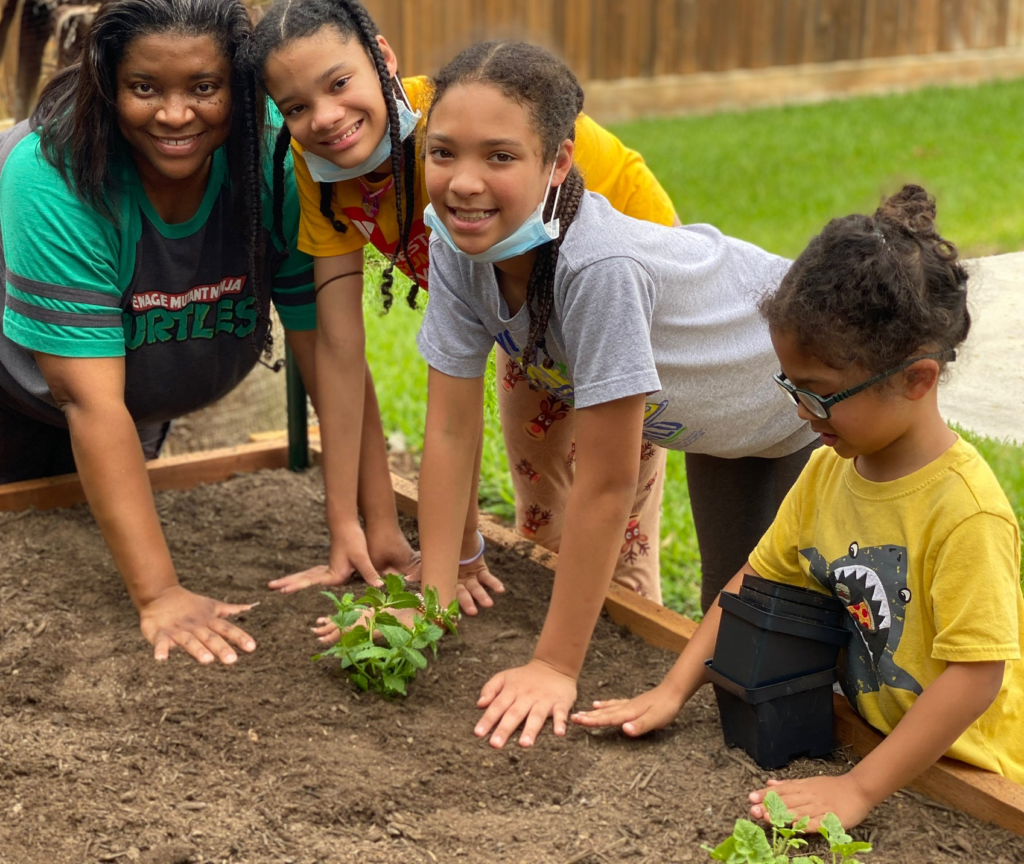
Note: Planting a garden with your kids is a great way to get your kids off of the screens and out of the house. Click here to read more about ways to entertain the kiddos when you’re stuck at home with them. https://chucksducksandcoconuts.com/2020/04/28/fun-activities-when-stuck-at-home-with-kids/

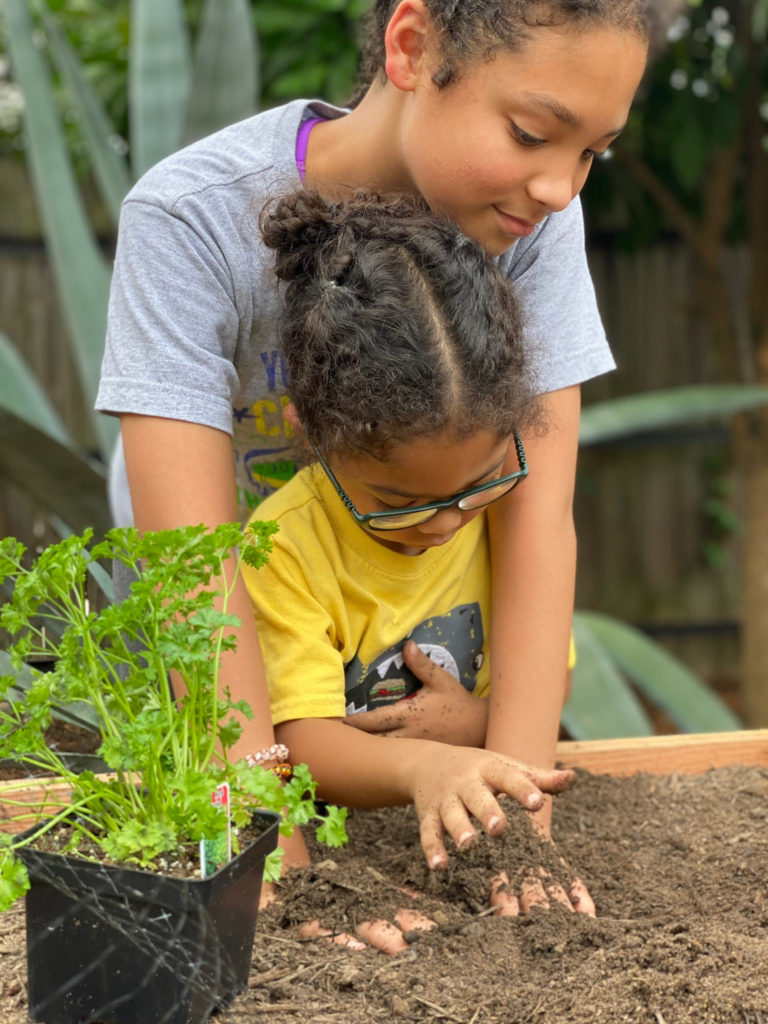
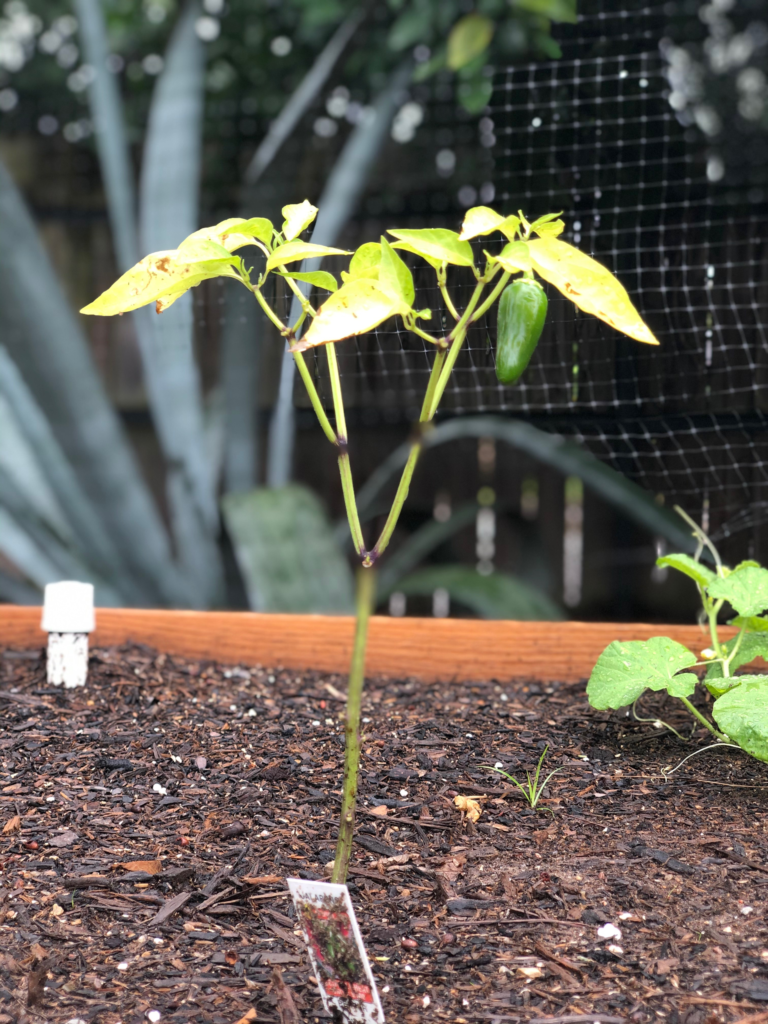
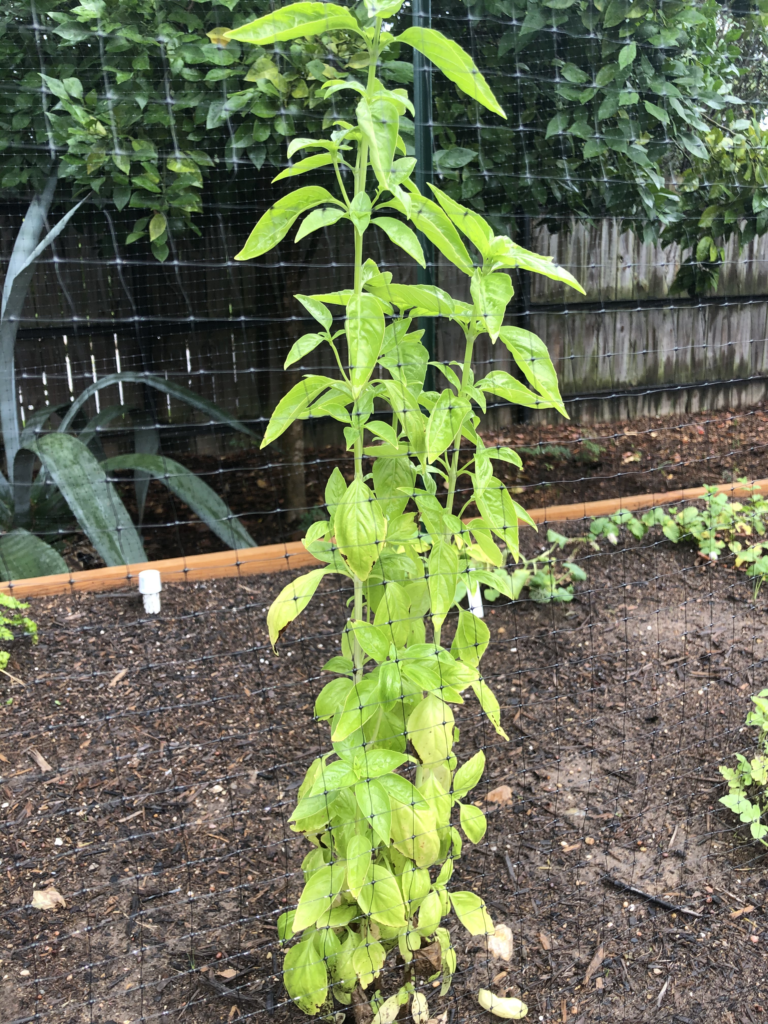


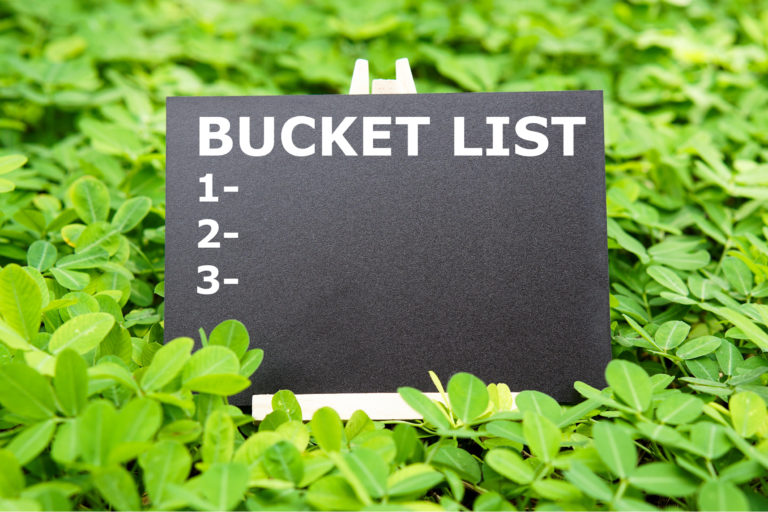




We planted a raised bed garden for the first time this year, too. We used some mushroom compost on the base and our plants are huge. I love the idea of including the kids in the process.
Your garden looks fantastic! I have no gardening experiece, but after reading your post I feel like I want to grow plants! Thank you for so many interesting informations. 🙂 By the way, you children are adorable!
Wow great. I need to take these ideas for my garden. I have failed so many times. Thanks for your tips.
Loved the detail in this post! It was full of great information. Thank you! I’m feeling really motivated to go build sons raised garden beds! My kids will love it 😊
This is so helpful. We took a chance with just a few herbs in pots this year and next year I wanted to try going bigger. This will help me get started with everything! Thank you!
This is a wonderful and complete piece on starting a garden – kids or not! I love it and it makes me wish I could do more in my garden just now – but until my broken arm heals, I’ll have to enjoy yours! I love what you do with your kids! They are so lucky to have you as their mom!
[…] *If you’re looking for a way to connect with nature and your family well past the summer, check out this post about planting a garden with your kids: https://chucksducksandcoconuts.com/2020/07/18/planting-a-garden-with-your-kids/ […]